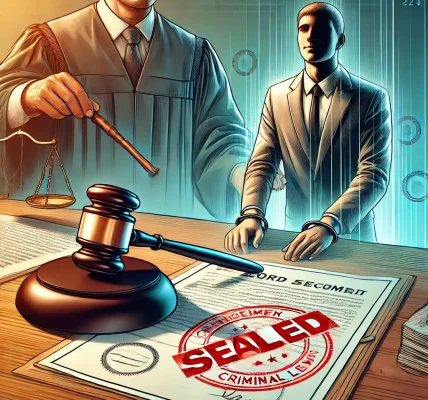Crimes are categorized into different types based on their nature and severity. Two major categories of crime are white-collar crimes and violent crimes. These crimes differ significantly in intent, execution, legal consequences, and societal impact. This article explores the key differences between white-collar and violent crimes, their legal implications, and how the justice system treats them.
1. Understanding White-Collar Crimes
White-collar crimes are non-violent offenses committed for financial gain, typically involving fraud, deception, or manipulation. They are often committed by professionals, business executives, or government officials.
A. Common Types of White-Collar Crimes
- Fraud: Includes securities fraud, mortgage fraud, and healthcare fraud.
- Embezzlement: Misappropriation of funds entrusted to an individual.
- Bribery and Corruption: Offering or receiving unlawful favors.
- Money Laundering: Hiding the origins of illegally obtained money.
- Insider Trading: Using confidential information for stock market gains.
- Identity Theft: Using someone else’s personal information fraudulently.
B. Legal Consequences of White-Collar Crimes
- Criminal charges typically result in fines, restitution, or imprisonment.
- Some cases lead to civil lawsuits or federal investigations.
- Convictions may result in loss of professional licenses or permanent reputational damage.
C. How White-Collar Crimes Are Prosecuted
- Investigations are often led by federal agencies such as the FBI or SEC.
- Prosecution typically involves complex legal proceedings.
- Penalties may include monetary fines, asset forfeiture, and imprisonment.
2. Understanding Violent Crimes
Violent crimes involve direct physical harm or threats against individuals. These crimes are considered serious offenses with severe legal penalties.
A. Common Types of Violent Crimes
- Homicide: The unlawful killing of another person.
- Assault and Battery: Physical attacks or threats of violence.
- Robbery: Theft involving force or intimidation.
- Sexual Assault and Rape: Crimes involving forced sexual acts.
- Domestic Violence: Abuse occurring in domestic settings.
B. Legal Consequences of Violent Crimes
- Severe punishments including long-term imprisonment or life sentences.
- Capital punishment may apply in homicide cases in some jurisdictions.
- Restraining orders may be issued to protect victims.
C. How Violent Crimes Are Prosecuted
- Prosecuted under state and federal laws, depending on severity.
- Investigations involve forensic evidence, witness testimony, and surveillance.
- Jury trials are common, and convictions can result in lengthy prison terms.
3. Key Differences Between White-Collar and Violent Crimes
| Feature | White-Collar Crimes | Violent Crimes |
|---|---|---|
| Nature of Crime | Financial or corporate offenses | Physical harm or threat |
| Violence Involved? | No | Yes |
| Typical Perpetrators | Business professionals, government officials | Individuals from varied backgrounds |
| Legal Consequences | Fines, asset forfeiture, prison | Long-term imprisonment, death penalty |
| Investigation Methods | Audits, forensic accounting, digital tracking | DNA evidence, witness statements |
| Public Perception | Often seen as “less harmful” but affects many | Considered dangerous and socially unacceptable |
4. Why White-Collar Crimes Are Sometimes Treated Differently
White-collar crimes often receive lighter sentences compared to violent crimes due to factors like:
- No direct physical harm to victims.
- Financial penalties being an alternative to incarceration.
- Complex legal loopholes allowing negotiations or plea deals.
- High-profile status of defendants leading to strategic legal defenses.
However, in recent years, law enforcement agencies have increased their focus on holding white-collar criminals accountable, with tougher penalties in high-profile cases.
5. Why Violent Crimes Carry Harsher Penalties
Violent crimes are seen as an immediate threat to public safety. Reasons for strict sentencing include:
- Physical harm or loss of life caused to victims.
- Higher recidivism rates among violent offenders.
- Public demand for justice and stricter punishment.
Unlike white-collar crimes, violent crimes often involve mandatory minimum sentences, reducing the chance of plea deals or alternative penalties.
6. Preventive Measures for Both Types of Crimes
A. Preventing White-Collar Crimes
- Corporate transparency laws to prevent financial fraud.
- Regulatory bodies monitoring corporate activities.
- Ethics training in workplaces.
- Whistleblower protection laws to encourage reporting of misconduct.
B. Preventing Violent Crimes
- Community policing and increased law enforcement presence.
- Gun control regulations to limit weapon access.
- Education and counseling for at-risk individuals.
- Rehabilitation programs for violent offenders.
7. Public and Media Perception
- White-Collar Crimes: Often overlooked or considered “less dangerous” despite their massive financial impact.
- Violent Crimes: Frequently covered by media, creating public fear and demand for stricter laws.
- Disparity in Sentencing: Critics argue that financial crimes should carry harsher sentences due to their devastating economic effects on society.
Conclusion
White-collar crimes and violent crimes differ in nature, impact, and legal consequences. While violent crimes pose a direct threat to individuals, white-collar crimes can have widespread economic repercussions. The justice system continues to evolve in addressing both types of offenses, ensuring that perpetrators face appropriate consequences based on the severity and impact of their actions.




